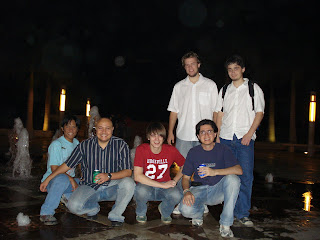The Long Tail of the Blogosphere
In a recent post, Alex Iskold from Read/WriteWeb points out that there’s no money in the Long Tail of the blogosphere and argues that this is due to the traffic problem. He writes:
Now imagine that the network is the blogosphere where new blogs spring into existence every day. And as they do, these newly minted bloggers are aspiring to make money. They set up their blog, pick a unique topic, research Google ads and affiliate programs, and they start writing content. But they are in for big disappointment, because in order to make money from blogging, they'll need more than good, original content - they need traffic…You make money on a lot of traffic to a single popular site or the sum of smaller amounts of traffic to many less popular sites.
- It has to be a virtually infinite Long Tail aggregator.
- It has to be a good Long Tail filter (I mean here collaborative filtering such as recommendations, ratings, rankings, reviews, and votes).
- It has to have something to buy and sell.
- Google aggregates the Long Tail of advertising and sells ads. As
- Amazon aggregates the Long Tail of physical goods and uses different collaborative filtering tools such as product reviews, ratings, and recommendations.
- eBay also aggregates the Long Tail of physical goods. eBay’s collaborative filtering model is basically based on ratings of the Long Tail of merchants who sell those goods.
Blogging (i.e. a person or group writing about a subject(s) of interest), however, cannot make money even with the support of Google ads. Although a blog can be viewed as an aggregator of the Long Tail of knowledge and those who have it via comments and trackbacks, it cannot be seen as a virtually infinite Long Tail aggregator since the target audience is somehow limited. This is also true for popular blogs. Smart bloggers with huge influence (e.g. Stephen Downes) can have popular blogs and consequently get more in-links. They however still have a restricted number of readers interested in the topics subject of discussion in their blogs. Moreover, a blog does not include a powerful collaborative filtering technique. It rather filters the Web according to the narrow lens of a single blogger or a small group of bloggers in the case of a group blog. Furthermore, blogs do not sell products or services. Blogs mainly deal with knowledge (information and people). Information can only be shared and people can only be connected/networked.





















